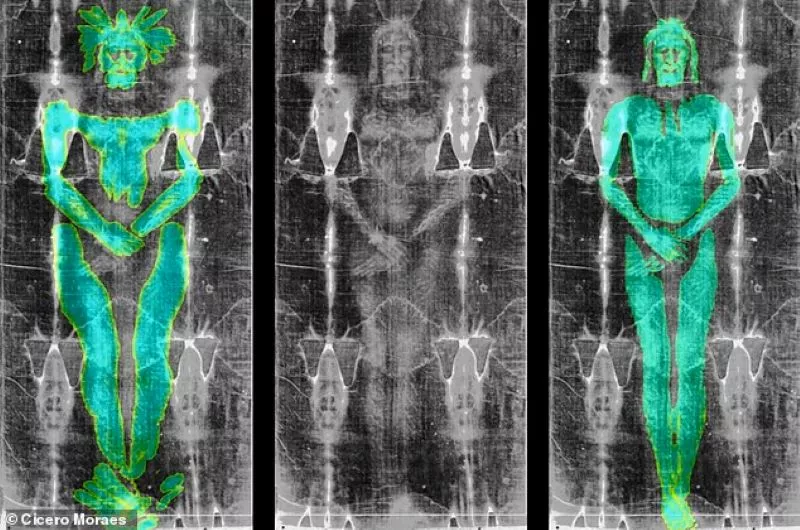The Sacred Sindon (Turin’s Sindon) is a piece of linen fabric on which the image of a bearded man is imprinted, which the Christian community argues that it is the shrine in which the body of Jesus Christ was deposited after its redevelopment from the Cross.
Sindon has been kept in the Turin Cathedral since 1578 and is often scientifically studying – many of them argue that it is simply a human construct.
Until recently, scientists dated him to the Middle Ages but, in August 2024, Italian researchers confirmed that it dates back to about 2,000 years ago, that is to say, around the time of Jesus.
Now, a new study confirms the scientific theory that the fabric is not depicted in the form of God, because the Sindon in reality has never wrapped the body and the face of the dead Jesus.
A “masterpiece of Christian art”
The Brazilian researcher of 3D (3D) designs, Cicero Moraes, a specialist in rebuilding historical figures, used digital modeling software to examine how the fabric covers the human body compared to a low, level of sculpture.
The researcher found that the characteristic pattern of sindon could have been produced by only one sculpture and concluded that the form on the linen fabric It is nothing more than a ‘masterpiece of Christian art’.
Moraes published the results of his research in Archaeometry magazine.
In his work, according to the Daily Mail, he states: ‘The icon of sindon is more consistent with a artistic representation low relief, rather than with the immediate footprint of a real human body. “
To understand how the image could be created in the Turin Sindon, Moraes created two digital three -dimensional sculptures: the first was a normal human body, while the second was a kind of flat sculpture, known as relief.
Using various three -dimensional simulation tools, the researcher wrapped digital fabric over these two sculptures and measured where the fabric touched the material.
He then compared the images left on the virtual fabric, with photos taken by his Turin Sindon in 1931.
Moraes found that the fabric wrapped over the relief sculpture was almost identical to that of sindon.
On the contrary, the image created by the wrapping of fabric over a real man seemed wide and distorted.
The Brazilian researcher even brought the famous “Mask of Agamemnon” as an example of a true footprint. “When you try to view a three -dimensional surface, such as the human face, on a flat surface such as a piece of fabric, the result should be extremely deformed,” he said.
Source :Skai
I am Terrance Carlson, author at News Bulletin 247. I mostly cover technology news and I have been working in this field for a long time. I have a lot of experience and I am highly knowledgeable in this area. I am a very reliable source of information and I always make sure to provide accurate news to my readers.











